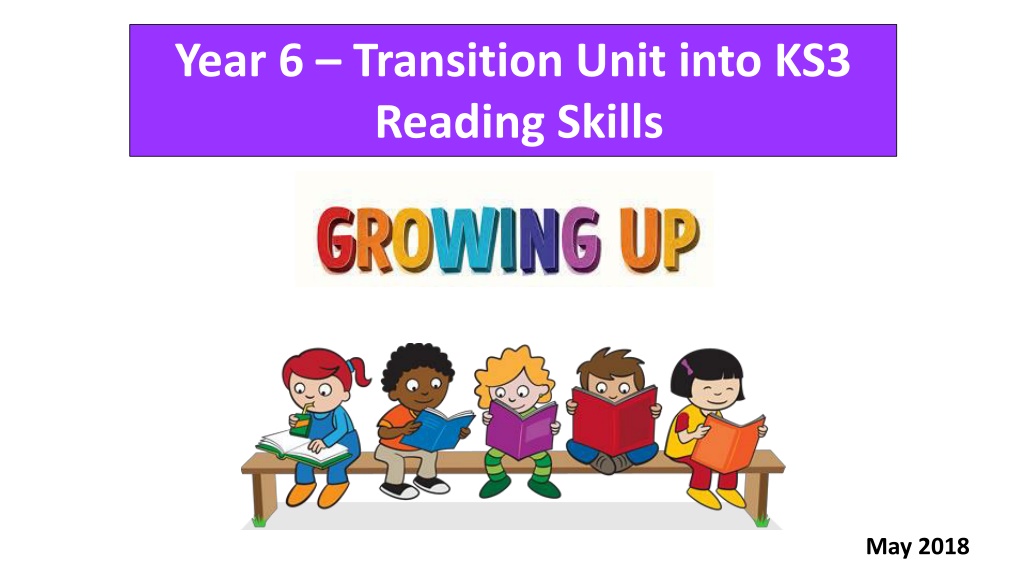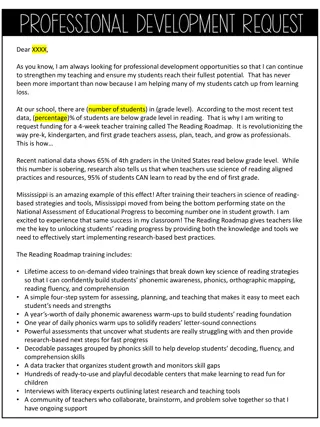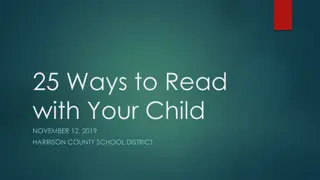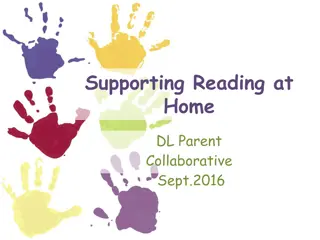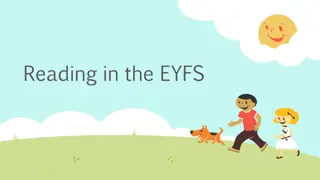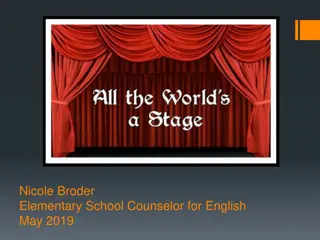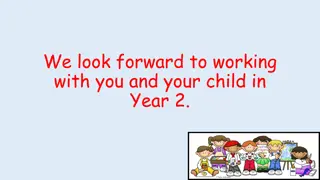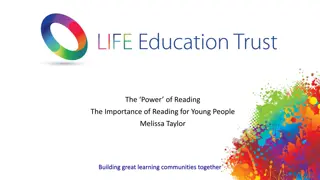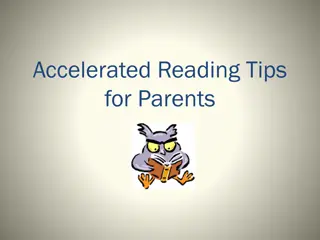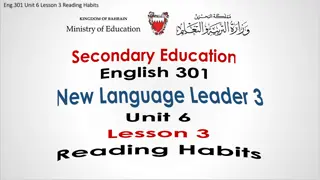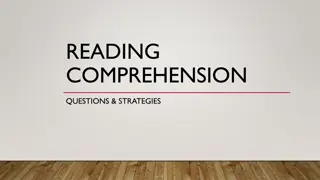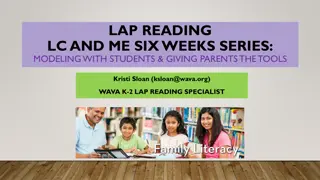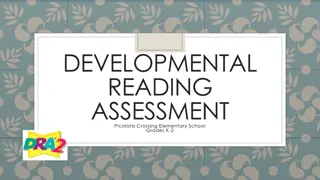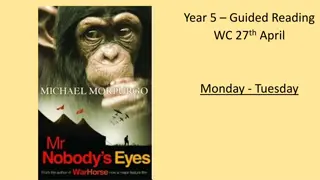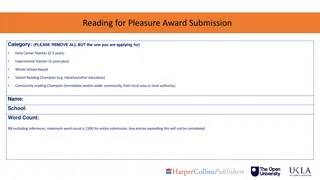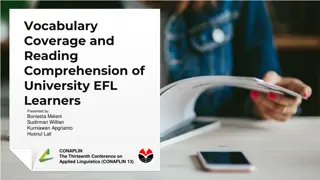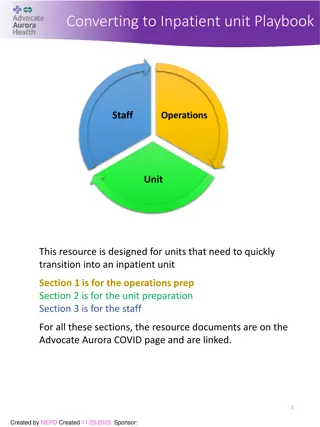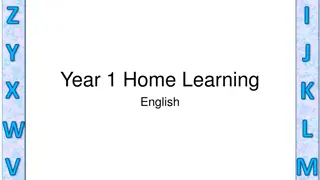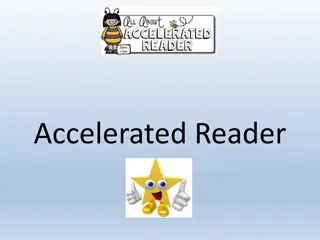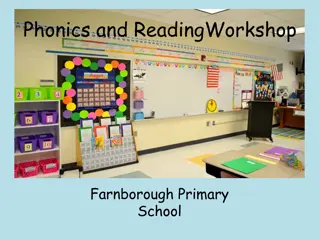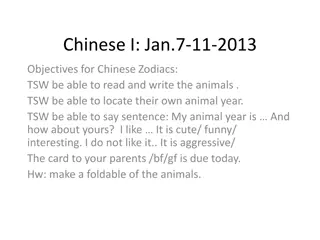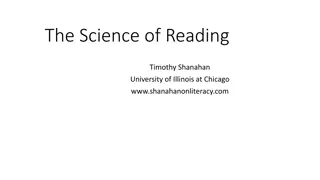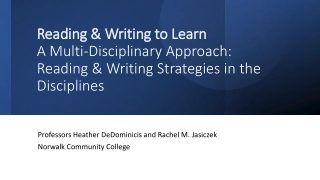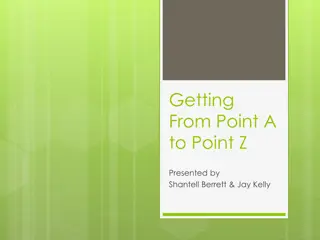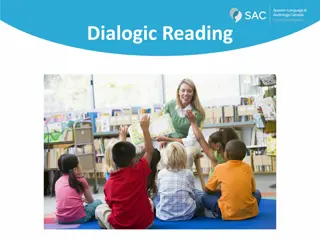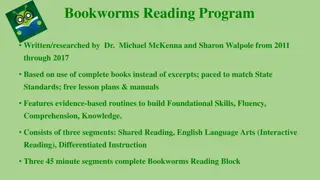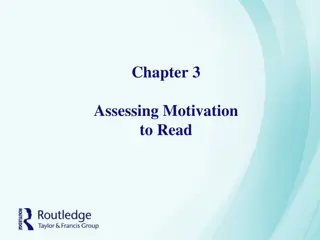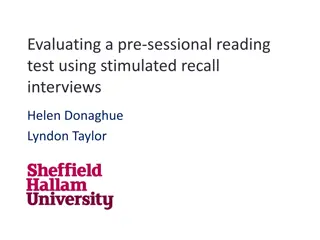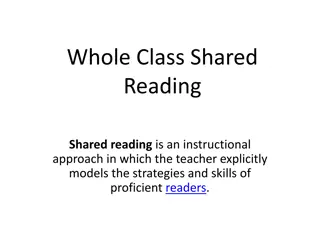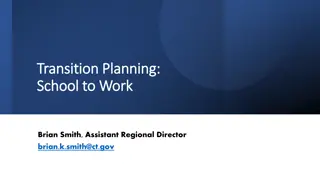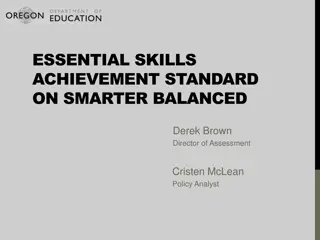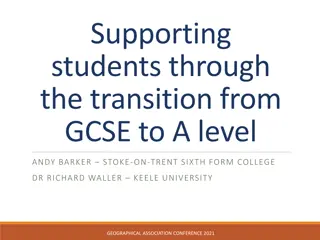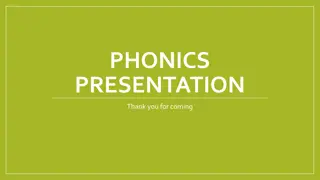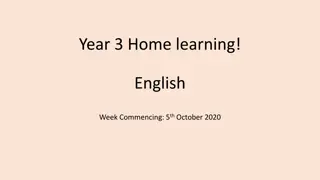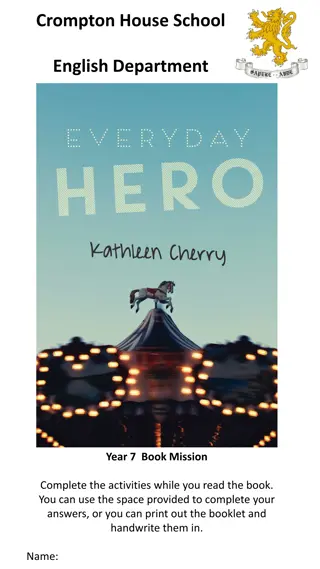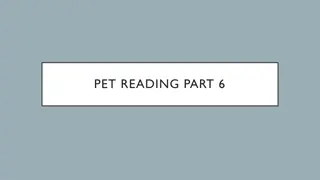Exploring Reading Skills in Year 6 Transition Unit
In this transition unit from Year 6 to KS3, students delve into the importance of reading, identify language devices, and create examples using them. Through private reading time and a focus on Roald Dahl's work, the lesson aims to spark excitement in exploring new worlds through reading.
Download Presentation

Please find below an Image/Link to download the presentation.
The content on the website is provided AS IS for your information and personal use only. It may not be sold, licensed, or shared on other websites without obtaining consent from the author. Download presentation by click this link. If you encounter any issues during the download, it is possible that the publisher has removed the file from their server.
E N D
Presentation Transcript
Year 6 Transition Unit into KS3 Reading Skills May 2018
Lesson 1 Learning Objectives: To understand and explain the importance of reading. To match up language devices to their definitions. To create your own examples using language devices.
Reading is fun! Roald Dahl in Matilda : The books transported her into new worlds and introduced her to amazing people who lived exciting lives. She went on olden-day sailing ships with Joseph Conrad. She went to Africa with Ernest Hemingway and to India with Rudyard Kipling. She travelled all over the world while sitting in her little room in an English village. Reading opens up the world to us our senses come alive as the writer works their magic. This lesson, we are going to be looking at how the writer allows us to see and hear the world they have created.
Who is your favourite Author? In pairs, talk about your favourite author, your favourite book? What makes your book/author your favourite?
Language Devices Have you heard of them before? What are they? Match the device to its description on the right hand side Some of these you will recognise but some you may not but that is absolutely fine! Match up as many as you can.
Match up! Onomatopoeia A figure of speech that shows a resemblance between things of different kinds = usually formed with like or as . A form of metaphor in which animals, ideas and things are presented as having human qualities = The drums were weeping today. Imagery Simile The repetition of vowel sounds in a sequence of nearby words = The monster spoke in a low mellow tone the repetition of the O sound. A group of words that create a mental image. Usually refers to the five senses = sight, touch, smell, hearing and taste. Metaphor Personification The repetition of the same sound, a consonant at the beginning of two or more words immediately succeeding each other. A figure of speech in which one thing is described as if it were another = Life is just a bowl of cherries . Assonance The term used to describe words whose pronunciations suggest their meaning = bang, buzz, slap, fizz Sound systems which over emphasise the s or ch sounds and produce a hissing sound. Sibilance Alliteration
The Answers! Onomatopoeia A figure of speech that shows a resemblance between things of different kinds = usually formed with like or as . A form of metaphor in which animals, ideas and things are presented as having human qualities = The drums were weeping today. Imagery Simile The repetition of vowel sounds in a sequence of nearby words = The monster spoke in a low mellow tone the repetition of the O sound. A group of words that create a mental image. Usually refers to the five senses = sight, touch, smell, hearing and taste. Metaphor Personification The repetition of the same sound, a consonant at the beginning of two or more words immediately succeeding each other. A figure of speech in which one thing is described as if it were another = Life is just a bowl of cherries . Assonance The term used to describe words whose pronunciations suggest their meaning = bang, buzz, slap, fizz. Sound systems which over emphasise the s or Ch sounds and produce a hissing sound. Sibilance Alliteration
Sights and Sounds Pick 2 devices which create a sound and 2 devices which create an image in your head Using your artistic talents, draw them: Onomatopoeia Personification
Writing your own examples Sound Imagery Lee was a cheesy, wheezy cheese freak who liked to eat cheese all week. (Assonance) As friends, we are two peas in a pod! (Metaphor) The lightening crashed through the night waking me up with a fright. (Onomatopoeia) Today, I m feeling as fresh as a daisy. (Simile) Sally sells seashells on the sea shore. (Sibilance) Without my glasses, I am as blind as a bat. (Simile) Paige s pink polish pours profusely. (Alliteration) The trees danced back and forth in the wind. (Personification)
Reflection: Language Devices Reflection: Language Devices How well do you understand these devices? You will be creating and identifying language devices throughout Year 7 when you go to your new schools. This is hard, so much to remember. Do not worry if you can only remember and use a few. Almost there, need to practise a little more. The more you come across them, the better you will become! This makes sense to me, I get it.
Lesson 2 Learning Objectives: To identify language devices in a text. To use language devices in your own writing.
Can you find examples in this piece of writing? Label the highlighted examples I have found for you Can you find any others? Stars twinkled overhead in the midnight sky. The only sounds that punctuated the night were the crackling and spitting of the flames in the campfire. A gentle, cool breeze drifted across the forest landscape, kissing the faces of the mesmerized children. The smell of marshmallows toasting over the flickering fire wound their way up the children s noses. Flames stood tall and proud, their sparks illuminating the dark, creating dancing shadows on the children s eager faces. All present were completely silent, as still as marble statues. They sat, watching, waiting, for the tales of old to begin.
Can you write your own description? Use this image to help you write a piece of description. Aim to use as many language devices as you can! http://visualprompts.weebly.com/uploads/2/5/2/2/25222088/_8961539.png Pupils to share their pieces with the class. As you listen, see if you can pick up on the devices used.
Reading and Writing Language devices are important for both your reading skills and your writing skills. Reading = You identify them in a text and explain what the effect is. You use them in your own writing to make your writing more interesting, encouraging the audience to read more. Writing =
Reflection: Language Devices Reflection: Language Devices How well do you understand these devices after this lesson? You will be creating and identifying language devices throughout Year 7 when you go to your new schools. This is hard, so much to remember. Do not worry if you can only remember and use a few. Almost there, need to practise a little more. The more you come across them, the better you will become! This makes sense to me, I get it.
